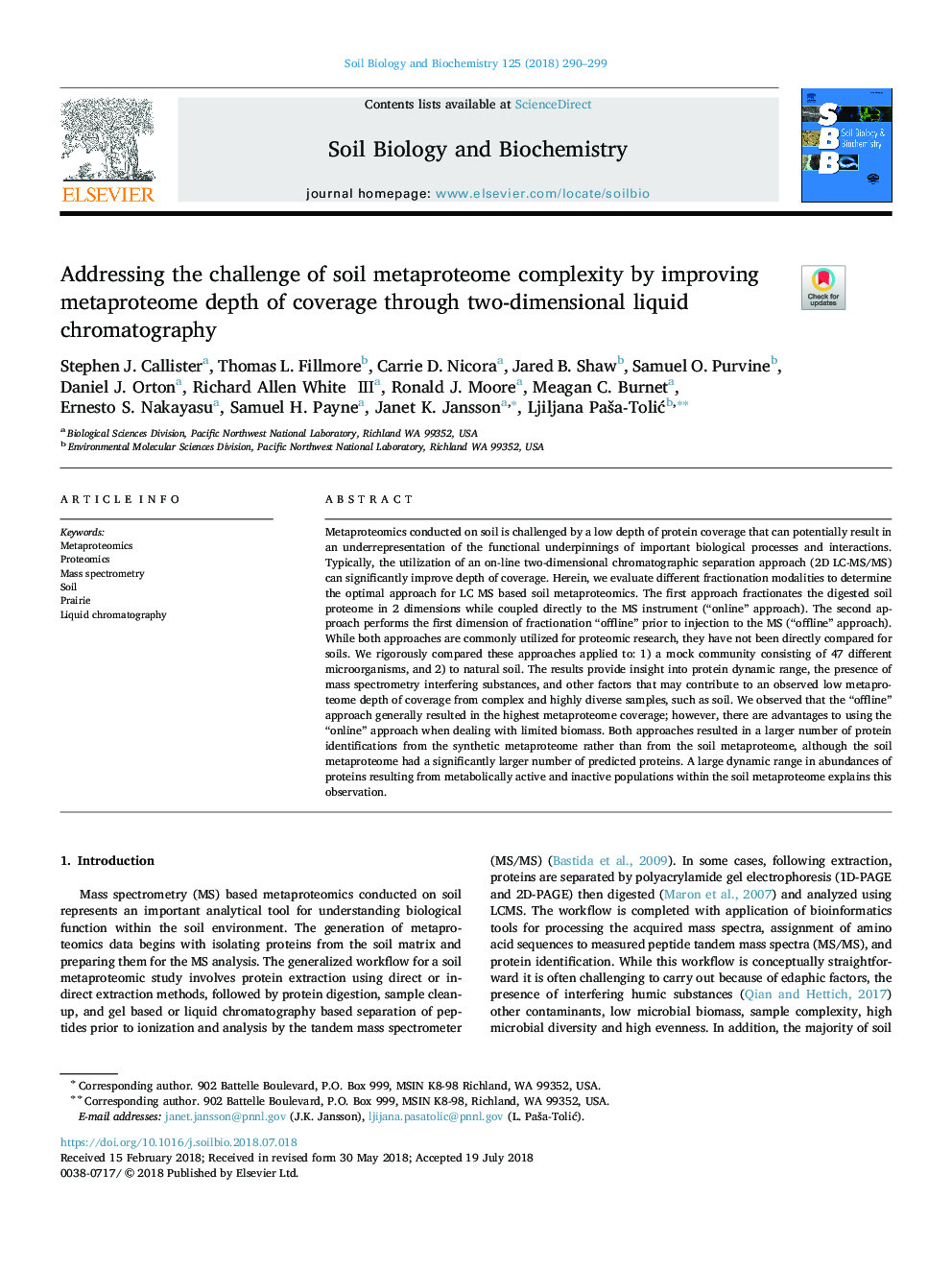| Article ID | Journal | Published Year | Pages | File Type |
|---|---|---|---|---|
| 8362501 | Soil Biology and Biochemistry | 2018 | 10 Pages |
Abstract
Metaproteomics conducted on soil is challenged by a low depth of protein coverage that can potentially result in an underrepresentation of the functional underpinnings of important biological processes and interactions. Typically, the utilization of an on-line two-dimensional chromatographic separation approach (2D LC-MS/MS) can significantly improve depth of coverage. Herein, we evaluate different fractionation modalities to determine the optimal approach for LC MS based soil metaproteomics. The first approach fractionates the digested soil proteome in 2 dimensions while coupled directly to the MS instrument (“online” approach). The second approach performs the first dimension of fractionation “offline” prior to injection to the MS (“offline” approach). While both approaches are commonly utilized for proteomic research, they have not been directly compared for soils. We rigorously compared these approaches applied to: 1) a mock community consisting of 47 different microorganisms, and 2) to natural soil. The results provide insight into protein dynamic range, the presence of mass spectrometry interfering substances, and other factors that may contribute to an observed low metaproteome depth of coverage from complex and highly diverse samples, such as soil. We observed that the “offline” approach generally resulted in the highest metaproteome coverage; however, there are advantages to using the “online” approach when dealing with limited biomass. Both approaches resulted in a larger number of protein identifications from the synthetic metaproteome rather than from the soil metaproteome, although the soil metaproteome had a significantly larger number of predicted proteins. A large dynamic range in abundances of proteins resulting from metabolically active and inactive populations within the soil metaproteome explains this observation.
Related Topics
Life Sciences
Agricultural and Biological Sciences
Soil Science
Authors
Stephen J. Callister, Thomas L. Fillmore, Carrie D. Nicora, Jared B. Shaw, Samuel O. Purvine, Daniel J. Orton, Richard Allen III, Ronald J. Moore, Meagan C. Burnet, Ernesto S. Nakayasu, Samuel H. Payne, Janet K. Jansson, Ljiljana PaÅ¡a-ToliÄ,
